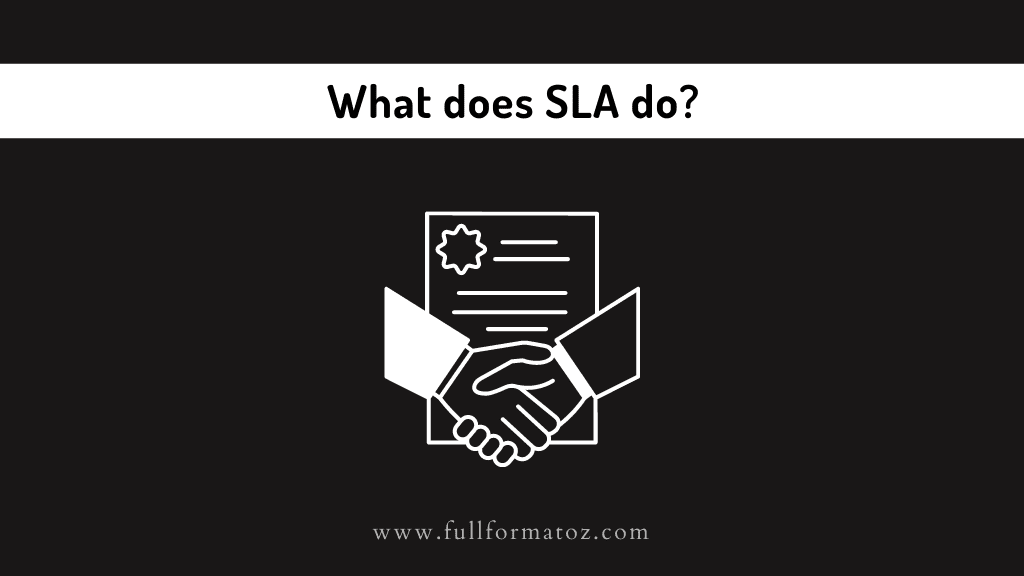What is the Full Form of SLA in BPO?
 |
Full Form of SLA in BPO - Full Form, Meaning, and Definition
What is SLA and what are its types?
A service Level Agreement is a contract provided by a service provider to a service receiver that binds the service provider to maintain the quality, availability and responsibility of service.
If the expectations of the customers aren’t met, then the penalties and remedies for the situation are also mentioned in the SLA.
What does SLA do?
 |
An SLA draws data from the contracted services and their terms and expected dependability into one document.
They clearly state metrics, responsibilities, and expectations for if problems occur with the service, neither party will plead bewilderedness.
It ensures either side has an equivalent understanding of needs. It protects both the client and the provider by mutually agreed terms and services to meet the expectations.
What are the types of Service Level Agreements?
There are three types of SLA:
- Customer-based SLA- This SLA is made for discrete customers and is inclusive of all services that the customer gets from the service provider.
- Service-based SLA- This SLA is made a service which provided to all the customers, that’s it’s not individualistic like a Customer-based SLA. It defines the nature, scope, and quality of the service so provided.
- Multi-level SLA- Under Multi-level SLA the SLAs are different for the different types of customers for the same service.
Why are SLAs important?
 |
SLA gives them the security that the service will meet the expected requirements and if it doesn’t then the customer has the option to apply redressal.
Also Read: What is the Full Form of BPO in the call center?
Why SLA is better at Customer Services?
- SLA focuses on the Abandonment Rate, the calls are mostly abandoned by the callers because of the long wait time. SLA prioritizes minimizing the number of callers who become impatient before they receive assistance.
- Average Handle Time is another metric measuring the average duration of interaction, from the customer initiating the call to related actions taken, it is a major factor in determining the outsourcer’s staffing levels. Lower AHT means that customer care is operating more efficiently.
- SLA also has Quality Metrics that enable higher levels of customer satisfaction, it provides the employees clear guidance of what their job is and how it’s measured. It helps employees choose the right support tools, and approaches to solve customer issues.
What are the differences between SLA and OLA?
 |
- 3SLA focuses on the service part whereas OLA (Operational Level Agreement) is an agreement for maintenance and other services.
- SLA is a contract between the internal service provider and external customer whereas OLA is between internal parties.
Advantages/Benefits of SLA:
- Documents all the agreements
- Defines standards
- Mutually accepted
- Security of interests of both parties
- Clearly defines the stakeholders and their responsibilities
Join the conversation